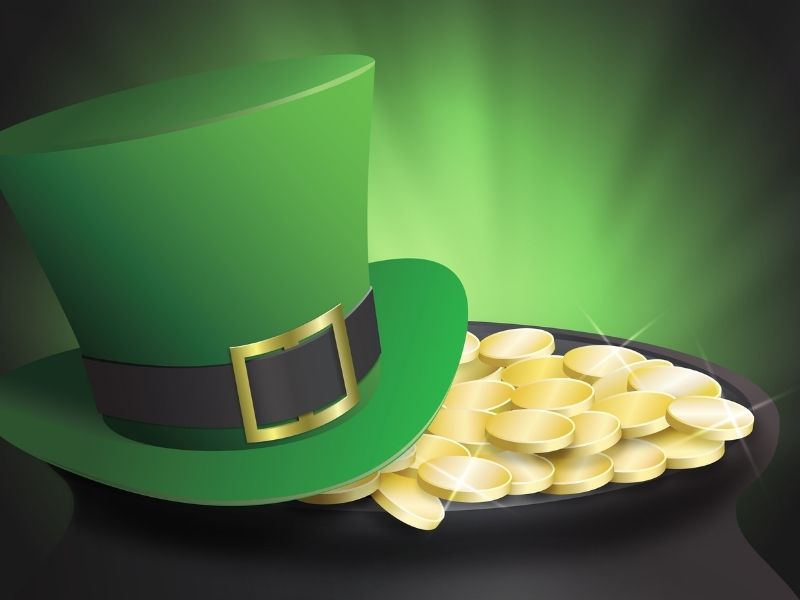Inglés para adolescentes: 10 amazing facts about St Patrick’s Day
10 datos sorprendentes sobre el día de San Patricio en inglés para aprender de forma divertida
Publicado por Alba Caraballo, editora de Conmishijos.com
Creado: 1 de junio de 2023 16:06 | Modificado: 9 de abril de 2025 08:22
¿Quieres conocer más acerca de la tradición del Día de San Patricio? Cada 17 de marzo, los irlandeses de todo el mundo celebran la onomástica de su patrón.
Te invitamos a leer 10 amazing facts about St Patrick's Day elaborado por la redacción de la revista para aprender inglés I Love English en su número de marzo 221 (número 331)
Los estudiantes de Secundaria conocerán datos muy interesantes y sorprendentes sobre la tradiciñon y costumbres que se realizan en uno de los días más importantes en Irlanda: San Patricio. Además, aprenderán nuevo vocabulario y practicarán la lectura en inglés.
Ver +: Divertidas lecturas en inglés para adolescentes
10 amazing facts about St Patrick's Day (10 hechos increíbles sobre el día de San Patricio)

1. St Patrick's Day (17th March) is a national holiday in Ireland and also celebrated in countries with a significant Irish population (Birmingham, London, Cambridge, Philadelphia, Chicago, Toronto, Buenos Aires, Paris...). It celebrates the arrival of Christianity in Ireland, but it is also a celebration of Irish cultural heritage.
2. Formerly, this festivity was strictly religious. Now it's typical to find all things traditionally Gaelic, including traditional music, dance and food. The festivity welcomes crowds of tourists, parades and the reciting of some limericks (humorous poems).
3. The first St Patrick's Day Parade in Dublin wasn't until 1931, but St Patrick's Day Parade in New York started in 1762 and is nowadays one of the world's largest parades.
4. Although green is the colour associated with St Patrick, the saint's official colour was blue, as green was considered unlucky. Green was first associated with the saint after it was linked to the Irish Independence movement in the late 18th century.
5. In 2010 the Sydney Opera House went green to mark the 200th anniversary of St Patrick's Day there. And in Chicago, every year, the river Kelly is dyed green. The dye lasts about five hours.
6. St Patrick's Day decorations and Irish folk tales show male leprechauns (there are no female leprechauns), which are little elves that spend their days making and mending shoes. Then they hide their earnings in a pot of gold at the end of the rainbow!
7. Ironically, St Patrick wasn't Irish. According to historians, he was born either in Scotland or Wales in the late 4th or early 5th century. At age 16 he was kidnapped by Irish raiders and sold as a slave. He lived in Ireland as a shepherd until he escaped. Some years later, he returned to Ireland as a missionary to spread Christianity in the year 432.
8. St Patrick used to teach people about Christianity by using shamrocks (or clovers). He said their three leaves illustrated the Father, Son and the Holy Spirit of the Holy Trinity. The three leaves of a shamrock also stand for faith, hope and love. Your odds of finding a four-leaf clover are about 1 in 10,000.
9. St Patrick never got canonized by a pope. This might make his saintly status questionable. But he wasn't the only saint not officially recognized as such. Actually, there was no formal canonization process by that time, so the title of saint was rather given to people seen as martyrs or extraordinary holy.
10. On St Patrick's Day you may hear a cry of "Erin go Bragh". This is actually a mispronunciation of the Irish Éirinn go Brách, which means "Ireland Forever".
Artículos relacionados
Inglés para adolescentes: 10 amazing facts about whales
¿Quieres saber unas cuantas curiosidades sobre las ballenas? Te invitamos a leer 10 amazing facts about whales elaborado por la redacción de la revista para...
Inglés para adolescentes: 10 amazing facts about Australia
Te invitamos a leer 10 datos asombrosos sobre Australia en inglés: 10 amazing facts about Australia. Una lectura muy entretenida, de la mano de la revista para...
Lecturas en inglés para adolescentes: 10 amazing facts about Women in Sports
¿Quieres saber algo sobre lo logros de las mujeres en el deporte? Te invitamos a leer 10 amazing facts about Women in Sports. Una lectura muy entretenida extraída...
Aprende inglés: 10 amazing facts about Rubik’s Cube
Te invitamos a leer 10 datos asombrosos sobre el cubo de Rubik en inglés: 10 amazing facts about Rubik’s Cube. Una lectura muy entretenida, de la mano de la...
Aprende inglés: 10 amazing facts about Scottish kilts
La revista para aprender inglés I Love English Junior invita a aprender y practicar el idioma de forma divertida. Si tienes hijos o alumnos que estén en primaria...
Comentarios
¡Sé el primero en comentar!

















